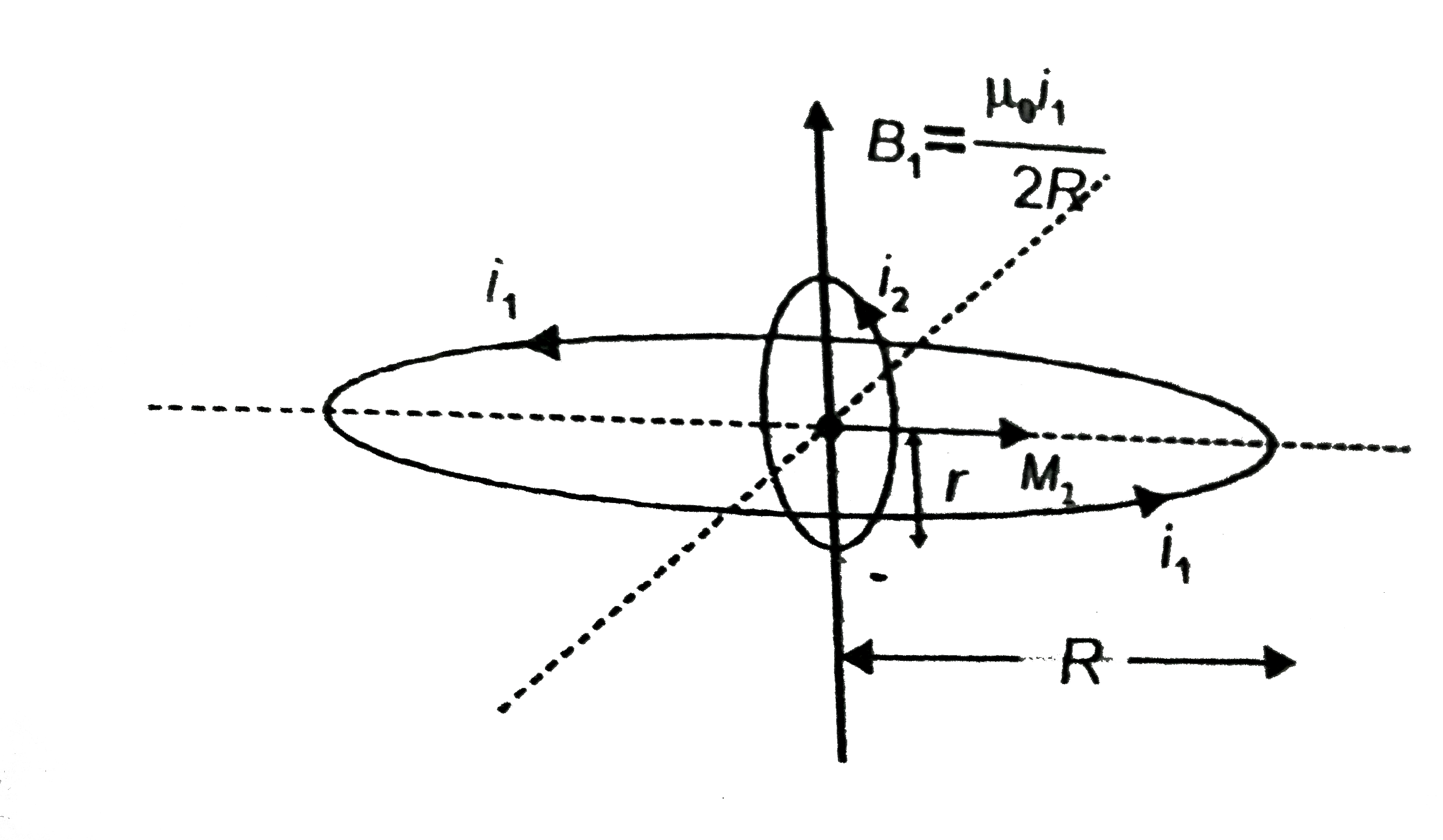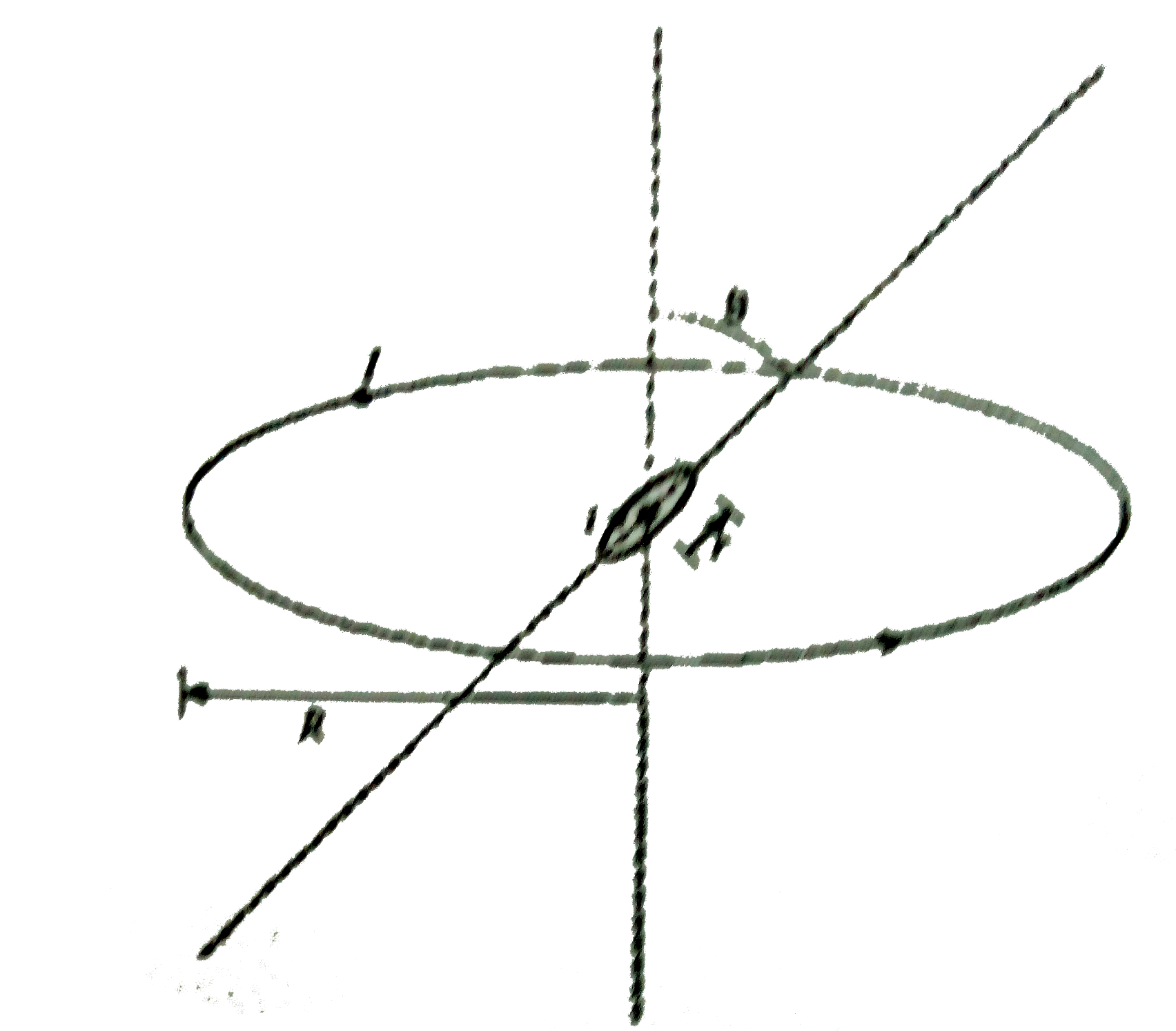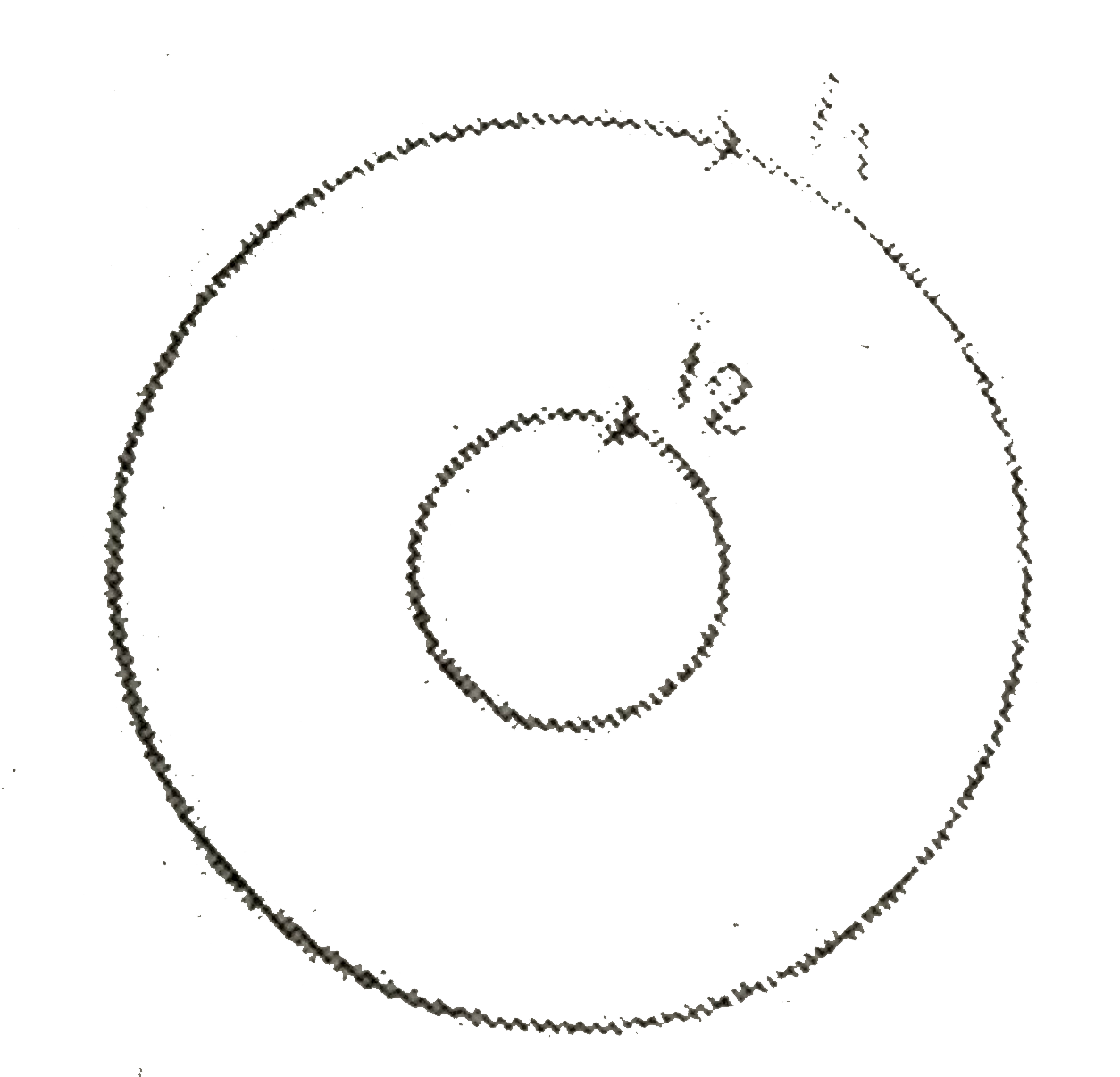A coil of radius R carries a current i1. Another concentric coil of radius r(r<<R) carries a current i2. Planes of two coils are mutually perpendicular and both the coils are free to rotate about common diameter. Find maximum kinetic energy attained by the two coils, when both are released from rest. The masses of two coils are M and m respectively.
Strategy : The magnetic field due to coil of radius R is μ0i12R. This field exerts a torque on shorter coil. An equal and opposite torque is exerted by the shorter coil on larger coil. There is no external torque acting on the system. The angular momentum remains conserved. Also the total mechanical energy remains conserved. At any instant, let ω1andω2 represent the angular velocity
l1ω1−l2ω2=0
or l1ω1=l2ω2=L (say).

The kinetic energy of the coils are k1=12l1ω21=L22l1
and K2=L22l2
By conservation of energy [(k1+k2)−0]+[−M2B1−0]=0
−M2B1 is final potential energy. The kinetic energy is maximum when potential energy is minimum. Potential energy is minimum when M2 and B1 are parallel.
⇒k1+k2=(i2πr2)×μ0i12R
Also k1k2=l2l1
⇒k1k2+k1=l2l1+l2
⇒k1=(l2l1+l2)(i2π2)μ0i12R
⇒k1=μ02R(mr4πi1i2(MR2+mr2)),k2=μ02(MRr2πi1i2MR2+mr2)
Topper's Solved these Questions
- BOOK - AAKASH INSTITUTECHAPTER - MOVING CHARGES AND MAGNETISMEXERCISE - Illustration12videos
MOVING CHARGES AND MAGNETISM
- BOOK - AAKASH INSTITUTECHAPTER - MOVING CHARGES AND MAGNETISMEXERCISE - Try Yourself27videos
MOVING CHARGES AND MAGNETISM
- BOOK - AAKASH INSTITUTECHAPTER - MOVING CHARGE AND MAGNESIUMEXERCISE - SECTION D16videos
MOVING CHARGE AND MAGNESIUM
- BOOK - AAKASH INSTITUTECHAPTER - NUCLEIEXERCISE - ASSIGNMENT (SECTION-D)10videos
NUCLEI
Similar Questions
A coil of radius R carries current i1. Another concentric coil of radius r(r<<R) carries current i2. Planes of two coils are mutually perpendicular and both the coil are free to rotate about common diametre. Find maximum kinetic energy of smaller coil when both the coils are released, masses of coils are M and m, respectively.
View SolutionFigure shows a larger horizontal coil of radius R carrying a current I. Another small coil of radius r(r<<R) carrying a current i & N turns is placed at the centre with its plane at an angle θ from the axis. Find the torque experienced by the smaller coil in this situation.
 View Solution
View Solution
Knowledge Check
- Question 1 - Select One or More
A coil of radius R carries a current I. Another concentric coil of radius r(r<<R) carries current 12. Initially planes of the two coils are mutually prependicular and both the coil are free to rotate about common diameter. They are released from rest from this position. The masses of the coils are M and m respectively. (m<M). During the subsequeny motion let K1 and K2 be the maximum kinetic energies of the two cells respectively. and let U be the magnetic of maximum potential energy of magnetic interaction of the system of the coils. Choose the correct options.
AK1K2=Mm(Rr)2BK1=Umr2mr2+MR2K2=UMR2mr2+MR2CU=μ0πl2r24RDK2>>K1 - Question 2 - Select One
A coil of length L, carries a current i. The magnetic moment of coil is proportional to
ALBL2CL−1DL−2 - Question 3 - Select One
A circular coil of n turns and radius r carries a current I. The magnetic field at the center is
Aμ0nIrBμ0nI2rC2μ0nIrDμ0nI4r
A small coil of radius r is placed at the centre of another coaxial coil of radius R(R>>r) find the coeffcient for this pair of coils.
View SolutionA 50 mH coil carries a current of 2 A. The energy stored in the coil is
View SolutionA circular coil of radius r carries I. If the same coil is now changed into a square loop carrying the same current, magnitude of its magnetic moment will
View SolutionIf the planes of two identical concentric coils are perpendicular and the magnetic moment of each coil is M, then the resultant magnetic moment of the two coils will be-
View SolutionTwo concentric circular coils of radii R and r (<<R) carry currents of i1 and i2 respectively. If the smaller coil is rotated slightly about one of its diameter, it starts oscillating. Then, which of the following statement(s) is/are correct ?
 View Solution
View Solution

